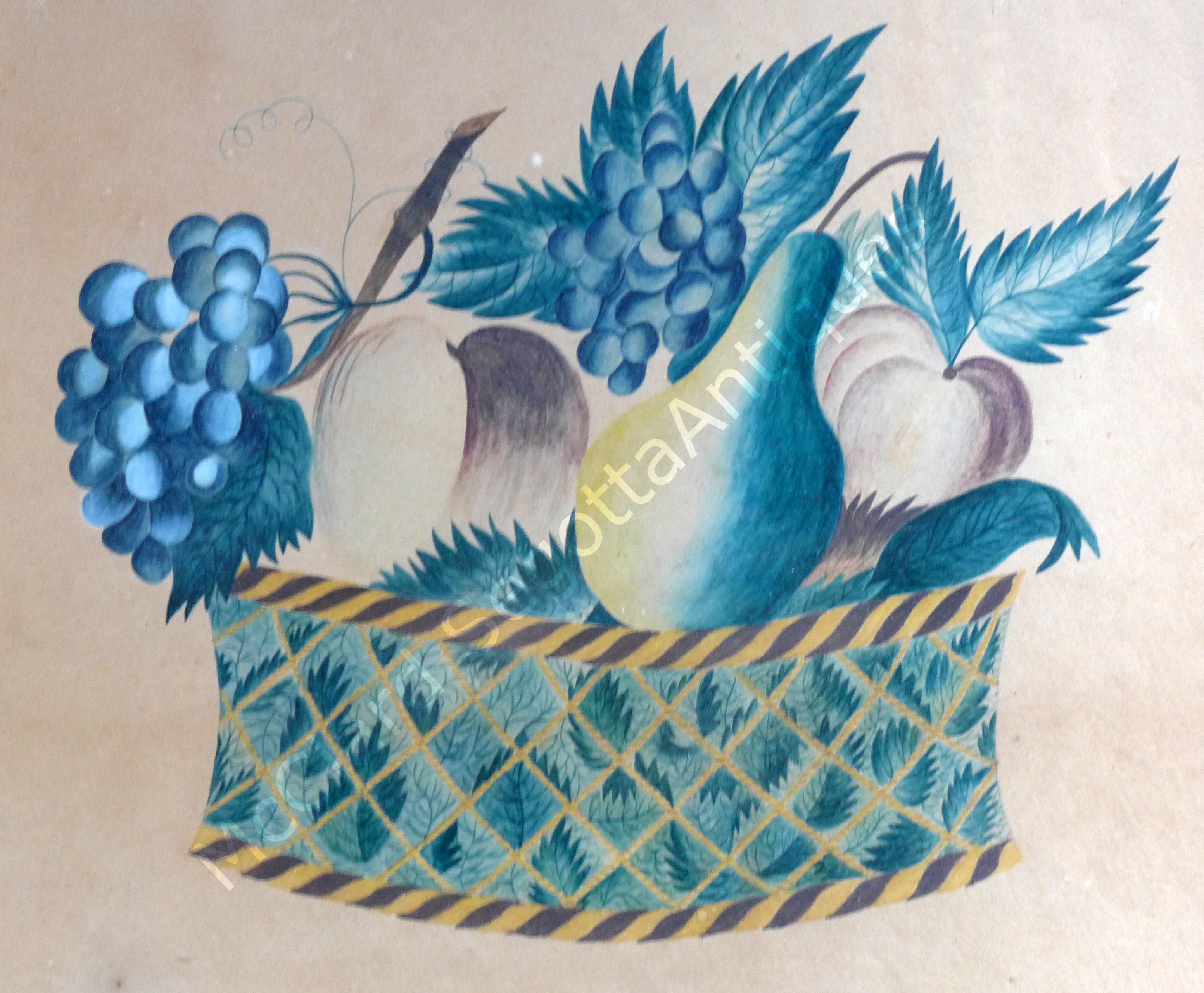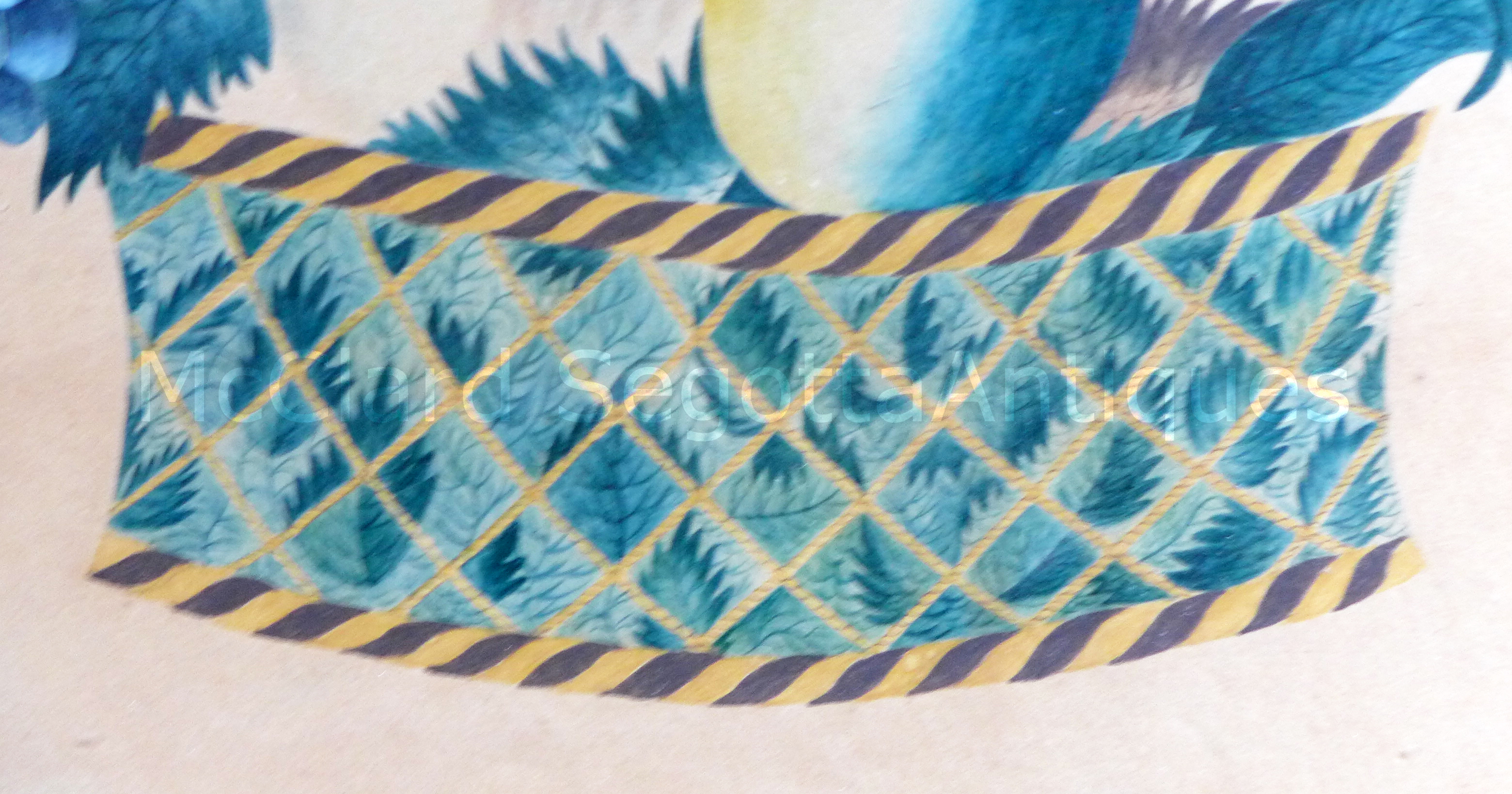
This is a beautiful small theorem of watercolor on paper of fruit in a woven bowl or basket. The colors are vibrant and the vessel holding the fruit is strikingly unique in that between the basket’s weaving we see leaves and branches as the actual body of the basket (not as if they are simply showing through the weaving). It resembles a quilted fabric printed with masses of leaves.
The theorem, dated circa 1830 has a wonderfully modern look. This 1830s piece of art forms one of those bridges from 19th century American folk art to the era of American Modern Art of the early 20th century. As both dealers and collectors, we always look for those pieces that show how one art style came from the other. It is one of those pieces that, had Edith Halpert found it, would have been displayed in New York City in Halpert’s Downtown Gallery where it would have been seen by the likes of clients like Abby Aldrich Rockefeller as well as Halpert’s artist friends, such as Georgia O’Keefe. Please do not misunderstand, as far as we know, this theorem did not pass through the hands of Halpert, we are simply saying it is the kind of art that forms the bridge from earlier folk art to early 20th century Modern Art.
If you focus on the apple, pear and peach, you see forms that are simplistic with colors that are so dichotomous they resemble an en grisaille theorem where the pear gives a splash of color.
Focus on the theorem’s dominant colors of green and blue. The only elements that are truly blue are the two clusters of blue. The greens used throughout are actually the same color that has been darkened and lightened for different elements. So, we get an almost completely monochromatic (green) painting with the addition of splashes of basically three colors in the fruit and the weaving of the basket. These additional colors added in small amounts add a splash of excitement just as adding a splash of color in an en grisaille. This theorem is a wonderfully simple composition that the eye sees as complex—much like Modern Art.
The period gilt frame measures 13” x 12” with a sight size of 9” x 8”. The wove paper on which this treasure is painted has a slight lavender tint which enhances the purplish-grey colors of the apple and peach. Without going into a long history of paper lesson, early wove paper took on different hues depending on whether the linen was bleached before it was beaten into pulp. The more color that paper showed, the less expensive it was. As with artists throughout history and even today, the artist’s eye put this inexpensive paper to good use enhancing her composition. American circa 1830.
#6872 SOLD
Please see Theorem Painting in America for more information on this wonderful form of folk art.


